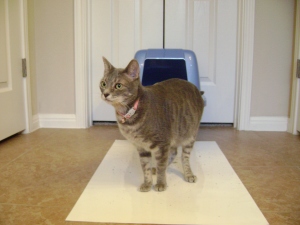My son has a big personality.
The kind that got him sent to the principal’s office five times that first week of kindergarten.
The kind that caused the bigger kids in the neighbor to pick on him when he was six. “Because,” as my neighbor told me in front of him, “he’s obnoxious.”
In 2nd grade, his big personality led to rounds and rounds of testing. ADD, he’s not. A frustrated, highly intelligent, spatial learner, he is. Given that schools traditionally cater to verbal and linear learning, his frustration in school is continuing to grow.
Now he’s finishing up the 3rd grade. This year, I spent considerable time and energy trying to get my sweet, happy but frustrated boy to restrain himself. I’ve prayed that he’ll finally grow up and there will be no more notes from teachers about how he’s a disruptive class clown who just can’t sit still for very long.
I’ve told him to try harder to be quiet, to fit in, to stop being so troublesome. You know, to be like everyone else.
My son had his year-end guitar performance. While the other students had their eyes trained to the music sheets in front of them, my son donned a red wig and hopped all over the outdoor stage. He strummed too loudly, stuck his tongue out, and slid across the stage on his knees to rock it out as he’s seen real rockers do in videos.
- He strummed too loudly, stuck his tongue out, and slid across the stage on his knees.
He had the time of his life.
I did not. I noticed some of the other parents sitting at the picnic tables shaking their heads and rolling their eyes. I could feel my body shrinking as if I were trying to hide. I turned my head in embarrassment and accidentally caught the eye of another mom. She looked a lot like me and was dressed similarly, too.
She could have been me. Except that she had a Mohawk. Her bright, beautiful blonde hair was shaved at the sides and the remaining strands were sticking straight up in the air.
What struck me more than the unexpected Mohawk was that her son who was waiting for his turn on the stage sported the exact same haircut.
Then, that beautiful rock star Mom who was so perfectly in sync with her son, smiled at me.
It hit me like a ton of bricks. Years of struggling with my son and for my son all faded away into that one moment of clarity. My job isn’t to make my son fit it. It’s to help him stand out.
And my son’s job is to grasp life and shake it up. Hop around on its stage and live beyond its fullest—just as he is, not as I want him to be.
Instinctively, I know it’s not going to be easy or quick. We’ll have to work together to figure out how to make his bigger-than-life personality coexist in a world that values fitting in and behaving as expected.
As an entrepreneur, I fully understand doing what is easy or expected in the business world isn’t always the only way, or even the best way.
But it took a Mom in a Mohawk to make me realize that lesson is true in raising kids, too.
It’s likely my son will never be easy or quiet or expected. And while I doubt I’ll be shaving my head any time soon, I wouldn’t have it any other way.









